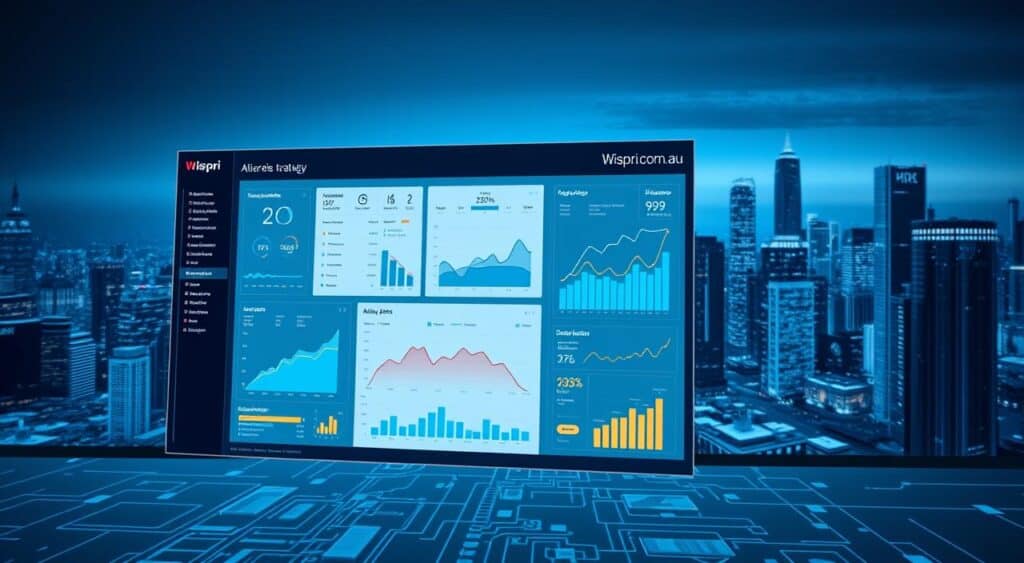Ever clicked “buy now” during a flash sale you weren’t planning to join? You’re not alone. Aussies lose an average of $1,200 yearly by rushing purchases at the wrong time. Even more surprising? 73% of online “sales” don’t offer real discounts. So why do we keep falling for them?
Specialists in marketing design these strategies to tap into basic human instincts. Phrases like “ending soon” or “last chance” trigger a fear of missing out (FOMO). This isn’t random—it’s built on decades of research into how customers make quick decisions under pressure.
Understanding these tactics helps you spot them. For example, time-limited offers create artificial scarcity. Retailers know this pushes people to act fast, often bypassing logical thinking. Tools like price trackers now let shoppers verify claims and avoid fake discounts.
By learning the science behind urgency marketing, you’ll make smarter choices. This guide unpacks how these strategies work and shares practical tips to resist impulse buys. Knowledge truly is power when navigating today’s shopping landscape.
Key Takeaways
- Urgency tactics exploit FOMO to drive quick decisions
- Most “limited-time” offers use artificial scarcity
- Price tracking tools help verify genuine discounts
- Aussies overspend $1,200 annually on rushed purchases
- 73% of online sales don’t reduce prices meaningfully
- Recognising marketing patterns builds better habits
Understanding Limited Time Only Sales and Consumer Behaviour
Have you ever felt your pulse quicken when seeing a “sale ends tonight” notification? This reaction isn’t accidental – it’s carefully engineered. The American Psychological Association notes that businesses use theoretical approaches to predict how shoppers make choices, particularly under time constraints.
How Urgency Hijacks Your Choices
Your brain treats limited-time offers like survival opportunities. When faced with a ticking clock, logical thinking takes a backseat to instinctive reactions. Studies show people make purchase decisions 23% faster during flash sales compared to regular shopping scenarios.
Why Scarcity Feels Irresistible
Our ancestors prioritised scarce resources for survival, and modern marketing exploits this wiring. A product labelled “low stock” suddenly appears more valuable, even if you didn’t want it yesterday. This explains why 68% of Australians admit buying items during sales they later regretted.
Marketers create artificial pressure through:
- Countdown timers triggering fight-or-flight responses
- “Last chance” alerts mimicking tribal warning signals
- Limited stock displays activating competitive instincts
Tools like price trackers help cut through the noise. By verifying claims and tracking historical data, you regain control over spending decisions shaped by consumer psychology tactics.
The Power of Urgency in Marketing
Have you ever bought something simply because the timer said “2 hours left”? That gut reaction isn’t random – it’s how marketing teams design urgency to work. Nobel Prize research reveals 90% of purchase decisions come from emotional impulses, not careful analysis. This explains why “limited stock” alerts feel impossible to ignore.

Emotional vs Rational Buyer Motivations
Your brain has two shopping modes: fast (emotional) and slow (rational). Urgency marketing hijacks the fast mode. Studies show ads triggering excitement or fear double conversion rates compared to fact-based messaging. When you see “50% off ending tonight”, your logical mind doesn’t get time to check prices or needs.
| Trigger Type | Common Tactics | Consumer Response |
|---|---|---|
| Emotional | Countdown timers Limited stock alerts |
Impulse purchases FOMO-driven choices |
| Rational | Price comparisons Product specifications |
Delayed decisions Research-based buying |
Here’s the twist: marketers know you’ll pay 15-20% more when rushed. Tools like price trackers help bridge this gap. By checking historical data, you separate real deals from manufactured urgency. Next time a sale tempts you, pause. Ask: “Would I buy this without the timer?” Your wallet will thank you.
Retail Psychology: Its Role in Shaping Smart Purchases
Ever noticed how some stores make you linger longer or click faster? That’s no accident. Specialists study shopper behaviour to design environments that guide your choices – both online and offline.
Defining Retail Psychology in the Modern Market
This field examines why you reach for certain products first or feel compelled by “only 3 left” alerts. It’s not just about shelf placement – modern tactics use real-time data to predict what you’ll want next.
Businesses leverage three core principles:
- Environmental cues: Warm lighting or curated playlists that relax your guard
- Decision shortcuts: “Bestseller” labels that override product comparisons
- Progress nudges: “Complete your collection” prompts during checkout
Australian shoppers encounter these daily. A café might place fresh muffins near the register because 62% of impulse buys happen in queue lines. Online stores use scrolling product galleries that mimic endless aisles.
Understanding these patterns helps you spot when businesses are steering your choices. Next time you feel rushed to purchase, ask: “Is this my need – or their design?” Awareness turns you from target to informed customer.
Decoding Consumer Behaviour and Buyer Motivators
Your shopping cart tells a story about what drives your choices. Behind every purchase lie two powerful forces: product motivation (why you pick specific items) and patronage motivation (why you favour particular brands). Recognising these patterns helps you separate genuine needs from clever marketing nudges.
Emotional and Rational Product Motivation
Ever bought something just because it felt special? That’s emotional product motivation at work. You might choose designer sunglasses for their status appeal, or grab a chocolate bar at checkout because it sparks joy. On the flip side, rational motivation drives practical decisions – like selecting a phone plan based on data allowances.
Brands cleverly blend both approaches. A car ad might show sleek design (emotional) alongside fuel efficiency stats (rational). This dual strategy taps into different parts of your decision-making process, making offers feel irresistible.
Examples from Leading Brands
Consider how Apple uses emotional patronage motivation through its “Think Different” ethos. Fans often pay premium prices because they feel connected to the brand’s identity. Meanwhile, Amazon wins through rational patronage motivation – fast delivery and price comparisons keep customers coming back.
Three strategies successful companies use:
- Limited edition releases (emotional product motivation)
- Money-back guarantees (rational patronage motivation)
- Loyalty programs blending both motivators
Next time you reach for your wallet, ask: “Am I buying the product, or the story behind it?” Understanding these buyer motivators turns you from impulsive spender to savvy customer.
Harnessing Social Proof and Emotional Advertising
Ever trusted a product because strangers raved about it? That’s social proof in action – our brains use others’ experiences as shortcuts for decision-making. In Australia, 82% of shoppers check online reviews before buying, spending 13 minutes on average evaluating feedback. This digital word-of-mouth shapes choices more than traditional ads.
Why Crowd Wisdom Sways Choices
Customer reviews act like personal recommendations at scale. You’re twice as likely to buy something with 50+ verified ratings than an identical item with none. Brands know this: 94% of local businesses actively collect testimonials because they understand your trust grows with each positive story.
Influencers and Visual Persuasion
Popular creators impact decisions through perceived expertise. When a trusted face shows how they use a product, it triggers “if it works for them, it’ll work for me” thinking. Combined with visual cues like:
- Star ratings that jump out in search results
- Customer photos showing real-world use
- Video testimonials demonstrating features
These elements create convincing narratives. One Sydney skincare brand saw 300% more sales after adding user-generated before/after photos to product pages.
While social proof helps navigate options, stay alert. Some businesses fake reviews or pay for inflated ratings. Tools like Fakespot help verify authenticity – because informed choices beat impulsive ones every time.
Leveraging Wispri for Smarter Price Tracking
Ever wondered if that “limited stock” alert was genuine? Wispri cuts through the noise with real-time tracking across Australia’s top stores. This AI-powered tool helps you shop smarter by showing actual price patterns instead of fake urgency triggers.
![]()
How AI-Powered Monitoring Supports Your Savings
Wispri watches prices at Amazon Australia, eBay, and 12+ major retailers 24/7. Its algorithms learn when products truly hit low points. You save time while the system:
| Manual Tracking | Wispri AI | Savings Impact |
|---|---|---|
| 3+ hours weekly | Zero effort | 89% time reduction |
| Missed sales | Instant alerts | 23% better deals |
| Guesswork | Historical graphs | Spot fake discounts |
Customisable Alerts and Historical Price Data
Set your ideal price targets for anything from power tools to laptops. Wispri’s dashboard lets you:
- Create alerts for specific % discounts
- Compare current prices to 12-month averages
- Filter notifications by store or product type
The PRO version adds stock level predictions and competitor price matching. Customers report saving $480+ yearly by avoiding rushed purchases. As one user notes: “I now wait for real value drops instead of panic-buying.”
With transparent data replacing marketing tricks, you become the boss of your budget. Why shop blind when smart tracking exists?
Best Practices for Applying Consumer Psychology in Your Strategy
How do you design shopping experiences that feel effortless? The answer lies in understanding what makes your customers tick. When context aligns with their needs, people make decisions 40% faster according to Sydney University research. This isn’t about manipulation – it’s about creating clarity that builds trust.
Great strategies work like invisible guides. They help shoppers navigate choices without overwhelming them. Think about how your favourite store groups related items – that same logic applies online. Clear signage in physical locations should mirror intuitive website categories.
Bridging the Gap Between Channels
Consistency is your secret weapon. Customers switching between your store and app shouldn’t feel they’re dealing with separate brands. Match these elements across platforms:
- Colour schemes that evoke the same emotions
- Identical product information (sizes, materials, care instructions)
- Uniform service standards for returns and exchanges
One Melbourne fashion label increased repeat purchases by 35% after syncing their in-store music playlists with website background tracks. Why? Familiar sounds created subconscious comfort during digital browsing.
Smart businesses use context to reduce friction. Online shoppers appreciate size guides with real customer photos. In-store buyers love QR codes linking to video demonstrations. These strategies respect customers’ intelligence while addressing hidden doubts.
Remember: your goal isn’t to trick people into buying. It’s to become their trusted guide. When you focus on genuine value over gimmicks, loyalty follows naturally. After all, happy customers are your best marketers.
Integrating AI, Data, and Urgency for Effective Retail Strategies

Imagine knowing exactly when prices drop without lifting a finger. That’s the power blending smart tech with ethical marketing. Modern businesses use AI to analyse mountains of consumer behaviour data, creating win-win scenarios where urgency meets actual value.
Utilising Real-Time Insights from Wispri
Platforms like Wispri turn guesswork into strategy. Their free service tracks pricing trends across 15+ Australian stores, showing whether that “50% off” claim holds water. For budget-focused shoppers, it’s like having a personal assistant who whispers: “Wait three days – better deal coming.”
Here’s how smart companies balance urgency with integrity:
- Using historical pricing data to schedule genuine sales periods
- Alerting customers about real stock shortages (not imaginary ones)
- Rewarding loyalty with early access instead of fake countdowns
A recent study found businesses using transparent tactics keep 42% more customers long-term. Wispri PRO takes this further with features like competitor price matching – perfect for Aussies wanting maximum bang for their buck.
The future belongs to companies that educate buyers. By sharing tools like price trackers, you build trust while standing out from pushy competitors. After all, informed customers make the best advocates.
Conclusion
What if every “limited offer” could be met with calm confidence? Understanding how urgency tactics work transforms you from reactive spender to savvy customer. When businesses use time pressure, your awareness becomes the ultimate defence.
Ask three critical questions before purchasing: “Do I need this today?”, “Is the discount real?”, and “What happens if I wait?”. These pauses let your logical mind catch up to emotional impulses. Tools like price trackers add clarity, showing whether sales align with historical patterns.
Smart shopping isn’t about avoiding promotions – it’s recognising genuine value. Brands earn trust through transparent practices, not fake countdowns. You hold the power to choose rather than chase.
By mapping your emotional triggers, you’ll spot when “urgency” crosses into manipulation. Keep businesses honest by demanding proof behind their claims. With knowledge as your guide, every purchase becomes a conscious win.
FAQ
Why do limited-time offers push you to buy faster?
Scarcity triggers FOMO (fear of missing out), activating your brain’s fight-or-flight response. Brands like Kmart use countdown timers or “stock running low” alerts to make you act quickly, even without a logical reason.
How does urgency override rational thinking when shopping?
Urgency prioritises emotions like excitement or anxiety over logic. For example, Myer’s flash sales create a sense of “now or never”, making you focus on potential gains (saving money) rather than questioning if you truly need the item.
What’s the difference between emotional and rational buyer motivators?
Emotional motivators rely on feelings—like wanting to fit in (Apple’s “Shot on iPhone” campaigns). Rational motivators focus on practical benefits, such as Bunnings highlighting durability in power tools. Most purchases blend both.
How does social proof shape your decisions online?
Seeing others approve a product (e.g., Woolworths’ user reviews or influencer endorsements) builds trust. Platforms like TikTok use visual cues, such as “1k bought in 24 hours”, to validate choices and reduce your perceived risk.
Can AI tools like Wispri help you avoid impulse buys?
Yes! Wispri’s AI tracks price histories across retailers like JB Hi-Fi. Custom alerts notify you when items drop below average prices, helping you wait for real deals instead of rushing into “limited stock” traps.
What’s one practical way to use consumer psychology in daily shopping?
Pause before buying. Ask, “Would I want this if there was no sale?” Brands like David Jones design seamless experiences (e.g., free returns) to ease doubts—but always check if the value aligns with your needs first.
How does real-time data improve your savings strategy?
Tools like Wispri analyse trends, showing when products (e.g., Nike sneakers) typically drop in price. With this insight, you can time purchases around genuine discounts, not manufactured urgency from retailers.

